
January 2023 | kcgmag.com GARDENER The Kansas City Take Time to Enjoy the Birds Cultivating a Love for Conifers Rose Report Plants on Your Plate: Jicama Indoor Gardening: Practical Produce
The Kansas City
Independently owned and operated since 1996
PUBLISHER
Michael Cavanaugh
EDITOR
Elizabeth Cavanaugh

CONTRIBUTORS
Zoë Aber
Lauren English Jason Mispagel
Dennis Patton
Tamra Reall
Elizabeth Stoakes
Denise Sullivan
DISTRIBUTION
Publishers Delivery Solutions, Inc.

IF YOU WOULD LIKE TO DISTRIBUTE the magazine at your place of business, please contact Mike Cavanaugh at mike@kcgmag.com 913-648-4728
NEED MORE MAGAZINES? mike@kcgmag.com 913-648-4728
CONTACT US P.O. Box 8725 Prairie Village, KS 66208 913-648-4728

ADVERTISING
Mike Cavanaugh at mike@kcgmag.com 913-648-4728
EDITORIAL
Elizabeth Cavanaugh elizabeth@kcgmag.com 913-648-4728
HOW TO SUBSCRIBE
See details on page 5.
SUBSCRIPTION
Elizabeth Cavanaugh elizabeth@kcgmag.com 913-648-4728
WEBSITE kcgmag.com
editor’s notes
Wintertime activities
In the winter months while the garden slumbers, our activities slow. Like the trees and shrubs in the landscape, gardeners are dormant and less physically active this time of year. We spend much of our time indoors reading new gardening books, ordering seeds from catalogs, or charting the next grow season.
Mr. Gardener and I are no different. After combing through catalogs filled with inspiration, we discuss our shared hopes for our little piece of paradise. Then it’s on to our individual hobbies. For instance, if the weather is decent, he will go for a bike ride and I’ll walk a mile or two. That way we are keeping up our physical activity. And when winter winds blow limbs and sticks into the garden, we’ll gather them up for firepit fuel.
Mr. Gardener is likely to spend time in the greenhouse. He grows microgreens all season, then as we inch closer to spring, he will start a variety of seeds. Some edible, some ornamental, and all to keep his hands busy in the soil and his head dreaming of warmer days. Music is his other passion. He plays an acoustic guitar, a selftaught endeavor, and continues to string together chords for pleasure and peace.
For me, it’s birding, knitting, and watching a few binge-worthy British detective shows. Frequently it’s all three at once {grin}. Positioned near a window, I can see bird feeders and the diverse collection of visitors, while knitting a current project, and watching an episode or two of Grantchester.
My sentiments on knitting and gardening are similar. Both activities can be incredibly frustrating and yet deeply satisfying. I have often said that if my family depended on me for food from the garden they likely would starve. The same is true about knitting. If I was required to clothe my children with handmade garments, they would be forced to wear sacks the yarn shipped in. I have ripped out more incomplete projects than I can count due in large part to my lack of experience. And every ball of yarn has been pried from Louie’s mouth. (Louie is my 10-year-old male ginger cat that still plays like a kitten.) Fortunately, knitting keeps my hands busy, my mind stimulated, and, with any luck, a finished piece with a story to tell.
Speaking of birding, we are pleased to introduce a new contributor focused on birds. Elizabeth Stoakes, current president of Burroughs Audubon Society, will

inspire bird appreciation, and will offer tips on observation and identification. In reading her first article, I’m reminded of the benefits of binoculars. It is an element of this activity that merits consideration. It might be time for an upgrade.
What other hobbies and activities keep you occupied when the soil is frozen? Do you garden indoors? Or how about painting or puzzling? With a new year before you, are you going to try something new? Let me know what you’re up to these days.
I’ll see you in the garden!
2 January
2023 | kcgmag.com
GARDENER
In this issue January 2023 | kcgmag.com
snacks on pine cone seeds inaccessible to other birds.
4 Ask the Experts 5 Subscribe 6 Kids Ask
Bug 7 Speakers Bureau 8 Cultivating a Love for Conifers 9 Rose Report 10 Take Time to Enjoy the Birds 14 Indoor Gardening—Practical Produce 16 Plants on Your Plate—Jicama 18 Garden Calendar 19 Upcoming Garden Events 19 Garden Design Symposium
About the cover: This female crossbill
Learn more about backyard birds starting on page 10. PhotocourtesyofRodneyWright.
Dr.

The
| January 2023 3
Kansas City Gardener
Question: I know this sounds like a dumb question but how do I tell if a tree is dead? We moved in after the leaves dropped. I am concerned about the tree.
Answer: Remember, there are no dumb questions. This is a good question. Ideally you would be able to wait until spring and tree leaf-out before making any life-ordeath decisions. Here are some tips to help you decide. Bend a couple of pencil- or thumb-size diameter branches. They should be flexible. If they snap, they are more than likely dead. Take your thumbnail or a sharp knife. Cut under the bark layer. A healthy tree should have a green or white and moist appearance. This tells us that the cambium layer is alive. If it is dry and brown, it is dead.
Look for signs of bark falling off the tree. A healthy tree should have the bark intact. Tap the trunk. If there is a thud sound and the bark layer does not give, good news. If there is a hollow sound, the bark is loose, and the cambium layer is dead in that area. Do you see mushroom growth from the branches? Older branches or even the trunk that has been dead for some time will start to decay.
When in doubt wait until spring for a final diagnosis.
SOIL TEST ANSWERS LAWN TREATMENT QUESTION
Question: My lawn service left a note on my door saying my lawn needed lime and they were ready to apply. Do I need this application? I feel like they want my money instead of what’s right for the lawn.
Answer: Did they test your soil to determine the pH level? Did you ask to see a soil test report which indicates the pH level? Without a current soil test indicating the need, NEVER EVER apply lime. Lime raises the soil pH. Area soils already tend to be high which can result in nutrients not being avail-
Ask the Experts
able for growth.
The pH level of the soil regulates nutrient availability. When too low or high those nutrients are bonded tightly and not available for plant growth. Soil testing can be done through any of the metro area Extension offices, usually for a fee of less than $20. Here in Johnson County we have a free soil test program. Before you let them ap-
gift. Check from time to time and if the soil is dry, water with 10 gallons or so. Water when the soil is not frozen. The good news is root development will start as soon as the temps warm which will to help get a jump on growth.
On a side note, be sure to water the tree during the summer. I pass trees on my way to work that the city planted. Beautiful, properly
planting date. Let’s say you want to start tomatoes and plant outside the week of May 15. Six weeks earlier would be the week of April 3.
The amount of time varies with your growing conditions. Take good notes and adjust the timing in future years. The seed packet may also contain the estimated time needed to produce a healthy transplant. My hunch is most gardeners get excited to plant and start too soon, which results in overgrown plants.
HOW TO MANAGE APHIDS INDOORS

Question: I brought a large tropical hibiscus indoors that was on my patio. Now I have an infestation of aphids. What can I do to help get rid of this pest?
ply lime either ask for the test or take one yourself (https://www. johnson.k-state.edu/lawn-garden/ soil-testing/free-soil-test.html).
PLANTING TREES IN WINTER
Question: My neighborhood has been devastated by Emerald Ash Borer and the city removed the dead trees. Now they would like to replant. My concern is they want to do this in the dead of winter. Is this advised?
Answer: Trees can be planted year-round. The issue with winter planting is the potentially harsh and dry conditions. If the tree is planted properly, and watered adequately, the winter planted tree should do just fine. The main concern would be a very dry winter and not being watered.
Take the tree from the city as a
DENNIS PATTON Horticulture Agent

planted, but with the drought last summer the homeowner did not find the time to water and by fall they were dead! What a waste of money and time.
WHEN TO START GROWING TRANSPLANTS
Question: I am going start a few transplants under grow lights in my basement. When should I start them?
Answer: Growing your own transplants can be fun and rewarding. The timing is dependent on several factors. As a rule, most flower and vegetable transplants take about 6 to 8 weeks from seeding to planting. The best way to determine when to seed is to count backward. Start with the date you plan on planting outside and count back 6 to 8 weeks. That is your
Answer: There are a potential number of hitchhikers that enter our homes on plants during the winter months. Also, indoors they have no natural predators so their populations can quickly spike. The best suggestion would be to apply an organic insecticidal soap. This product is a mixture that suffocates the soft bodied insect. The product works by contact so a thorough spray for coverage is a must. Be sure the application reaches all sides and surfaces of the leaves. It will also take repeated applications to keep the numbers down.
Insecticidal soaps are not a mixture of dish soap and water. These are formulated to be safe on plants and are made from fatty acids. Dish soap can burn the leaf as it can remove the waxy covering on the leaf. I realize the internet is full of recipes for making your own with dish soap, but these are not recommended.
Since the aphids tend to be most prominent at the tips, or the point of new growth, extremely heavily infested limbs can be pruned to also help reduce the population. The goal is to keep the aphids in check until the plant can be returned outdoors in the spring.
4 January 2023 | kcgmag.com
Keep aphids in check until the plant can be returned outdoors.
Dennis Patton is the horticulture agent for Johnson County K-State Research and Extension. For free information fact sheets, visit www.johnson.ksu.edu, or call the Extension office at 913-715-7000.
INDICATORS THAT MY TREE IS ALIVE OR DEAD

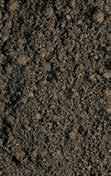
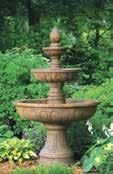
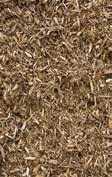



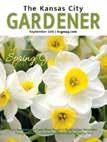
The Kansas City Gardener | January 2023 5 913-681-2629 2 blocks west of US 69 on 199th Street, Stilwell, KS GARDENERS WELCOME! Our premium products are available for pickup or delivery. Come see us for all your project needs. Topsoil F Garden Mixes F Bulk Mulch F Flagstone Wallstone F Boulders F River Gravel Mexican Beach Pebbles F Water Garden Rock WATER GARDEN INSTALLATIONS LANDSCAPE LIGHTING SUPPLIES JOHNSON COUNTY TOPSOIL & LANDSCAPE MATERIALS WALLSTONE TOPSOIL FOUNTAINS MULCHES JOHNSONCOUNTYTOPSOIL.COM Name: Address: City, State, Zip: Phone: E-mail: Where did you pick up The Kansas City Gardener? Please enclose your check payable to The Kansas City Gardener and mail with this form to: P.O. Box 8725, Prairie Village, KS 66208 The Kansas City Gardener is published monthly Jan. through Dec. For convenient mail delivery, complete the form below and send with your check for $35.00. You will receive a oneyear subscription. SUBSCRIBE TODAY
Kids Ask Dr. Bug
about the curious things found in the garden
Yes! Entomophagy, the eating of insects, is very common throughout the world. In fact, 80% of the world’s nations, approximately 3,000 ethnicities, and over two billion people include insects as a part of their diet. All stages of insects are consumed, including eggs, nymphs, larvae, pupae, and adults. Of course, insect products are also consumed even more widely, such as honey from honey bees. In reality, we all consume insects on a regular basis! The technology doesn’t exist to keep all insects and insect parts out of our food when it is processed. There are federal regulations that limit how many insects and insect parts can be in our food.
What do different insects taste like?
There are around 1,000-2,000 species of insects that are known to be edible. Frequently eaten insects are grasshoppers, crickets, mealworms, buffalo worms, waxworms, other caterpillars, bees, wasps, and ants. Crickets, like others in the same order (Order Orthoptera which includes grasshoppers, katydids, crickets) have a nutty flavor. Ants are more citrusy. Waxworms and mealworms can be flavored with cinnamon and sugar, chili powder, garlic, or many other flavors. Also, what the insects are fed can influence what they taste like.
What are the benefits to eating insects?
While insects are not commonly intentionally consumed in the United States, there are good reasons why we should consider doing so. Traditional livestock production costs a lot and is hard on the environment. In contrast, insect production costs less and has significantly fewer disadvantages for
the environment due to using less water and space, emitting far fewer greenhouse gasses, and creating less ammonia. Additionally, using crickets as an example of minilivestock, are five times as efficient as cows at converting their food into bodyweight, and most of the cricket is edible (80%), compared to only 40% of a cow. Crickets are
are fed foods that are also safe for human consumption – please don’t try this with the crickets found around your home, especially if you don’t know what they have eaten! Crickets are typically harvested around 6-8 weeks before they are fully developed. They are dried and then ground twice – once in a course grinder and sifted to
eating whole insects, cricket flour and the talents of skilled people have changed my thinking on this. Some of the best chocolate chip cookies and chips I have ever tasted were made using cricket flour. I would intentionally eat them again! A New Year’s resolution for me is to try a new recipe with cricket flour. Here is a link to a delicious

high in protein (almost as much as a steak!), low in saturated fat, and a good source of vitamins and minerals. They also have fiber. Research is being done to learn more about the benefits and any disadvantages of using insects as food. Two cautions that we know of are folks with a shellfish allergy may be sensitive to insects, and because this is a developing field, insect food like cricket flour can be very pricey –around $40/pound!
How do you make cricket flour?
Most cricket flour is made from the common house cricket (Acheta domesticus) which has a high protein content, and it tastes good. Crickets for human consumption
remove parts that don’t grind well (legs, wings, etc.), and then ground again to a fine size that is smooth. Cricket flour is a deep brown and is often mixed with other flours in baking, although it can be used by itself.
Do you have a favorite insect to eat?
I used to say that I didn’t eat insects. When I learned that we all eat insects as it is impossible to exclude insects completely from our food, I said that I didn’t intentionally eat insects. However, now I know more about the benefits of entomophagy, to humans and the environment. While there is still a “yuck” factor when I think about
recipe you might try, too: Choco Chirpies: Chocolate Chip Cricket Cookies (http://bugvivant.com/recipe/chirpies-chocolate-chip-cricket-cookie/), and here is a video if you would prefer to watch others make the cookies: https://youtu.be/ fCptc-IA6d4. If you do make these cookies, or another recipe, please share your experiences and pictures! @MUExtBugNGarden.
Do you have questions for Dr. Bug? Send them to ReallT@Missouri. edu or https://bit.ly/KidsAskDrBug Please include your name and age. To help me learn what you learn from this column, consider filling out this survey: https://bit. ly/KidsAskDrBugSurvey.

6 January 2023 | kcgmag.com
TAMRA REALL Horticulture Specialist
Dr. Tamra Reall (@MUExtBugNGarden) is a horticulture specialist for MU Extension – Urban West Region. For free, research-based gardening tips, call 816-833-TREE (8733), email mggkc.hotline@gmail.com, or visit extension.missouri.edu. The University of Missouri is an equal opportunity/access/affirmative action/ pro-disabled and veteran employer.
Would you eat a Chocolate Chip Cricket Cookie?
Are there cultures who eat insects on purpose?
For C ontainers, Ga r dens , T u r f, S hr u bs , And T rees
& shrubs & on the lawn.
For information on products call us at 913-492-2992. If you want to have our products applied contact Tobin Lawn & Landscape at 816-765-5565 or Big Green Turf Management at 816-600-4936.
SPEAKERS’ BUREAU
Need a speaker for your church, civic group or garden club? The Johnson County Extension Master Gardener (EMG) Speakers’ Bureau have the speakers you are looking for on just about any topic like environmentally safe lawn care, permaculture for the home landscapes, or perennial flower gardening.

We can adapt a program to meet your group’s needs, from a short 20-minute presentation to a longer format, if needed. While there are no fees for a volunteer speaker, a donation to Extension or the chosen volunteer organization is appreciated.
To schedule a speaker for your group, please contact the office. For more information on this service, call 913-715-7000, visit www.johnson.kstate.edu, and click on Speakers’ Bureau.
For Home and Garden...








Euston Hardware
6955 Tomahawk Rd Prairie Village, KS 66208 (913) 262-1405
Euston Hardware 453 E Red Bridge Rd Kansas City, MO 64131 (816) 216-7197


Packs Hardware 116 N 169 Highway Smithville, MO 64089 (816) 532-0525


EUSTON PACK’S
MISSED AN ISSUE?
KCGMAG.COM
The Kansas City Gardener | January 2023 7
Garden Design with Maintenance in Mind The K-State Research and Extension Marais des Cygnes District Master Gardeners Present: 6th Annual Spring Gardening Symposium in Paola, Kansas February 25, 2023 9:00 am – 3:30 pm $45 registration fee Check-in: 8:30 am This event is open to all! The registration fee includes: A gourmet boxed lunch, snacks, and all printed reference materials. Registration and payment are only available online and due by February 15. Space is limited! Here is the link to the online registration: https://tinyurl.com/ MdCEMGGardenSymposium Note: Payment for Symposium will show up as from MdCExtension@gmail.com Registration is not refundable. MdC EMGs receive 5 hours advanced training credit. Other EMGs: Please ask your County Agent if AT credit is approved. For more information call 913-294-4306. You can also find the link on our Facebook page at: www.facebook.com/mdcemg The Lighthouse Church 1402 E. 303rd St., Paola, KS 66071 (Park and enter on west side) Driving directions on registration link. “Know Before You Grow” Stacie Campbell, Marais des Cygnes EMG “Winning the Weed Wars” Lenora Larson, Marais des Cygnes EMG “Native Plant Landscaping: Best Management Practices” Brad Guhr, Director of Prairie Restoration, Dyck Arboretum “Maintenance for the Aging Gardener” Kevin Nelson, Douglas Co EMG K-STATE Research and Extension Master Gardeners Marais des Cygnes District Kansas State University is committed to making its services, activities and programs accessible to all participants. If you have special requirements due to a physical, vision, or hearing disability, contact the Marais des Cygnes Extension District at 913-294-4306. Kansas State University Agricultural Experiment Station and Cooperative Extension Service K-State Research and Extension is an equal opportunity provider and We service what we sell and more. Stop in today! Lawn & Garden supplies • Pet supplies • Bird seed Northland Feed 4807 N. Brighton, KCMO • www.mowerpartskc.com 816-452-8393 • Mon.-Fri. 9a-6p • Sat. 9a-1p Closed for lunch 12:45-1:30p every day Serving the Northland for 45 years! Mowers, Blowers, Hedge Clippers and Chain Saws are in stock now! All equipment assembled, serviced and ready to go when you buy it. Oil Sunflower Seed 50# bags on sale for $34.99 Wild Bird Seed 50# bags on sale for $26.88 Great selection of bird feeders NATU R A L P R ODUC T S T HAT KEE P YOU R G ARD E N S & L A W N S HAPP Y & HE A LTH Y
is the
product
Planting
will
Use
containers
Our
vitamins, trace minerals, enzymes & organic
in commercial fertilizers. Experience
containers & gardens, around trees
r
EARTH RIGHT SUPER STUFF®
perfect
to apply in spring, especially before a rain. Prepare the soil now for a better lawn and great gardens.
with THE MUSHROOM STUFF®
quick start your spring gadens, shrubs & trees.
in
too!
SURE BLOOM® NATURAL & SURE BLOOM® 6-7-6 contain
acids not found
great results in
Use Our Natural Products All Yea
FIND BACK ISSUES AT KCGMAG.COM GRAB A CUP OF COFFEE, SIT BACK AND ENJOY OUR ARCHIVES
Cultivating a Love for Conifers

From what began as scenery for a miniature railroad holiday display in our conservatory in 2001, Powell Gardens has amassed a collection of more than a hundred dwarf conifers over the past 20 plus years. When nearby garden renovations unearthed sandstone subsoil, which has much better drainage and is perfect for conifers, the choice became clear to build a garden just for them.
The late Marvin Snyder, (Overland Park, Kan.), long-time member and supporter of Powell Gardens and former president of the American Conifer Society (ACS), donated a considerable amount of the original conifer collection and continued to do so as the garden grew. This included the donation of most of the specimens he had designed for a conifer collection at the Linda Hall Library which had to be moved for building renovations. What started as only a small collection in one bed on the north side of our Visitors Center has since expanded and grown into a space that feels as if you are in a room built with living walls. In 2012, our garden applied for and was designated as an ACS Reference Garden. For more information about ACS and the Reference Garden program, visit www.conifersociety.org.
In recent years, Deb and Gary Guardia and Kirk Duncan, our local sponsors with the American Conifer Society, and senior gardeners Marissa Mills (2020-2021) and Zoë Aber (2021-present) have taken over the helm of leading the garden. We have fine-tuned the collection, continually bringing in new specimens, removing those that are tired, and elevating the design generally. In 2020, we began a small collection of bonsai which can be found tucked between their much larger cousins. Other additions include a bench, a small natural river stone birdbath, and a rotating display of conifer cuttings in the form of a mandala.
In 2021, we applied for and were awarded a grant from the American Conifer Society to continue expanding and improving our collection. The funds from this grant have allowed us to introduce several new conifer cultivars, with more planned for the spring.

Among these new additions, Picea omorika ‘Bruns’ is a striking Serbian spruce which adds a lovely pop of blue and fills in a gap in our ‘wall’ framed on either side by our pair of Tanyosho pines.
Another star of the garden, which was recently transplanted from elsewhere at Powell, is Chamaecyparis pisifera ‘Filifera Aurea’. The texture and practically neon color of this specimen is exceptional. Since it is located along the sidewalk towards the entrance
ZOË ABER Senior Gardener

of the conifer garden, it is great for catching a visitor’s eye and helping to bring them into the space.

One of our oldest and most impressive showstoppers is our Norway spruce, Picea abies ‘Acrocona’ which spills out of the bounds of its bed. In the spring it produces large cones that are a wonderful bright magenta color.
Pinus densiflora ‘Golden Ghost’ and Platycladus orientalis ‘Franky Boy’ are two of our most beloved crowd favorites who never fail to wow. Both have such distinctive forms and colors and are wonderful examples of the breadth and variety within the dwarf conifer category.
When Powell Gardens opens to visitors in the spring, we hope that you will plan a visit and spend some time in our ‘room’ of coni-
fers. Then you can determine for yourself which of our more than one hundred cultivars most catch your eye and perhaps be inspired to grow one in your own garden!
In early June, Powell Gardens will welcome visiting members of ACS taking part in the Central Region’s annual conference in the Kansas City area. For more information about the Kansas City conference, please visit www. conifersociety.org/news-events/ event/2023-central-region-annualmeeting/.
8 January 2023 | kcgmag.com
Zoë Aber first grew to love conifers while working beneath the ponderosa pines of Arizona while on a conservation crew as part of AmeriCorps. It has been a pleasure to continue that passion at Powell Gardens as a Senior Gardener and lead of the Conifer Garden.
Pinus densiflora ‘Golden Ghost’
Platycladus orientalis ‘Franky Boy’
‘Acrocona’ cones
Photo courtesy of Deb and Gary Guardia.
Photo courtesy of Deb and Gary Guardia.
Every Midwest rose grower’s hope is that there is enough snowfall to bring moisture to her garden. If there has not been enough moisture, your roses will need at least one good soaking (one gallon per bush) when the temperature is above freezing and the ground is not frozen. Check your weather app for the days in the 50s. We usually have one or two glorious days around 60 degrees. When we have such a day, I will attach my hose to a small circular sprinkler and let each of my beds have a deep soak while the sun is shining! And, don’t forget to disconnect your hose from the faucet after watering to prevent freezing and possible pipe damage.
January is the perfect month to
Rose Report
think about adding roses to your garden. The Kansas City Rose Society Rose Library (www.kcrsroselibrary.com) is a great place to start looking at roses that grow successfully in Kanas City. When choosing new roses or replacing ill performing roses, the KCRS Garden Committee, including KC Parks Landscape Technician/Head Rosarian Dana Flemming, Ann Greene, JJ Jensen, Kevin Lane and Martha Negley, looks at several key aspects of a rose before choosing.
The questions we ask are: What is its sustainable reference (meaning is it disease resistant and does the hybridizer have a reputation for breeding disease resistant roses)? Is the recommended rose the color, petal count and variety we need? Is
it a repeat bloomer? Is its American Rose Society rating 8.0 or higher (see www. rose.org to order the Selecting Roses Handbook with ratings)? Will it thrive in zone 6? Is it fragrant? Do local nurseries carry it? If we can’t find it locally, can we find it online at a reputable nursery? Do we know anyone who has grown it in this area?
If you are thinking about starting your own rose garden or adding roses to your garden, please spend some time looking at www.kcrsroselibrary.com. For rose care, click on the KCRS main site. I look forward to seeing many of you in the (hopefully snowy) Rose Gar-


den this month. The Laura Conyers Smith Municipal Garden remains the crown jewel of our city!
A spring program of interest to rose growers is scheduled for March 25. See the details listed in Upcoming Events on page 19.


The Kansas City Gardener | January 2023 9
BACKYARD BIRD FOODS • BIRD FEEDERS • BIRD HOUSES • BIRD BATHS • GARDEN ACCENTS • NATURE-INSPIRED GIFTS Carolina Wren Photo courtesy of Paige Radermacher 11711 Roe Avenue (NE corner 119th and Roe) • 913-491-4887 Hours: Mon-Fri 10am-6pm; Sat 9am-5pm; Sun noon-4pm www.wbu.com/kansascity Follow us at www.facebook.com/wbuleawoodks Wild Birds Unlimited of Leawood We Bring the Joy of Bird Feeding to Your Backyard. Save 20% Off One Item* *Valid thru Jan. 31, 2023. WBU Leawood only. Instore or online at MyWBU.com/kansascity. Use promo code SALE20. Offer not valid on optics, DSC memberships, gift cards, previous sales, or with other discounts. LAUREN ENGLISH Consulting Rosarian Lauren English is the Kansas City Rose Society Garden Chair at the Laura Conyers Smith Municipal Rose Garden in Loose Park and an American Rose Society Consulting Rosarian. She can be reached at laurenenglish.kcrs@ gmail.com or at the Ask a Rosarian hotline, kcrosehelp@gmail.com.
Take Time to Enjoy the Birds!
In 2018, the Americas celebrated a “Year of the Bird” coinciding with the 100th anniversary of the Migratory Bird Treaty Act. This legislation protected songbirds and game birds from unregulated hunting and collecting. “YB” events raised awareness of current threats to birds: habitat loss, window collisions, and more. Simultaneously, it was a joyful celebration of birds and our relationships with them— and emphasized the need for continued protection.

Revisiting that theme, I’ll (unofficially) designate 2023 as a “Year With the Birds.” My columns will focus on “bird appreciation,” describing birds’ seasonal activities and providing tips on observation and identification.
The Benefits of Binoculars

Some people reject binoculars
due to prior frustration with them. Some feel they’re unnecessary for casual birders. But optics enhance your enjoyment, allowing you to positively identify unusual birds, closely study behavior, and admire the variations of beaks, feathers, and color patterns. With patience, almost everyone can use them effectively.
Carefully choosing your best pair of binoculars (“bins”) will allow for years of trouble-free service. Post-holiday sales provide economical options. Today’s economy binoculars offer the performance of some “high-end” bins of 30 or 40 years ago. If you’ve only used grandpa’s old bins, you’ll be amazed by the light weight and sharp viewing afforded by current models.
Peruse National Audubon Society’s excellent “Binocular Guide”
(www.audubon.org/gear/binocularguide) prior to purchase. Bins are reviewed in six ascending price ranges, and don’t miss “How to Choose Your Binoculars,” a concise essay explaining what the numbers on binoculars mean and how they work. Generally, 7 or 8x magnification models serve well at home and afield; or, combine birding and gardening pleasures with a compact pair tucked in your pocket!
Beginners often obsess about identifying birds, but their goal should be mastering their bins! Every pair requires a simple (but essential) 4-step adjustment to accommodate your particular vision. Don’t skip the enclosures, which provide use and care tips. Once adjusted, the key to success is: PRACTICE! Hone your skills by focusing quickly on perching birds and following them as they move
from feeder to tree to ground, and you’ll rapidly improve.
Watching in a Winter Wonderland
Only the hardiest birds remain now. Summer’s territorial disputes forgotten, our “old friends” forage and evade predators in mixed flocks. I affectionately call these “chickatithatchwrenlets,” after some of their members: Black-capped Chickadees, Tufted Titmouse, White-breasted Nuthatches, Carolina Wrens, Ruby-crowned and Golden-crowned Kinglets. Cardinals, House Finches, and woodpeckers (Downy, Hairy, Red-bellied) complete the cast. Chickadees and titmice are indispensable to a flock, often being the first to discover food sources and potential predators. Titmice call “peter-peter-peter” and
10 January 2023 | kcgmag.com
STOAKES Birding Enthusiast New Year’s Resolution
Elizabeth Stoakes is currently President of Burroughs Audubon Society in Kansas City and has been birding for over 25 years. Please contact BAS via mail@burroughs.org or text/call 816-795-8177 with any birding questions.
ELIZABETH
(continued on page 12)
Above: Tiny, hyperactive Ruby-crowned Kinglets bounce through the trees alongside chickadees and titmice.
Photo courtesy of Terrence Thompson.
Above: This is an adult White-crowned Sparrow.

Below: This Red Crossbill (male) shows off his specialized beak.

Above: An American Goldfinch displays its subdued yellowish-green winter plumage.

Above: A young Cooper’s Hawk takes a break from hunting.

Below: Dark-eyed Juncos are one of our most numerous and recognizable winter sparrows.

| January 2023 11
The
Kansas City Gardener
Photo courtesy of Terrence Thompson.
Photo courtesy of Terrence Thompson.
Photo courtesy of Terrence Thompson.
Photo courtesy of Tom Tucker.
Photo courtesy of Rodney Wright.
Below:
Below:
make scratchy, nasal sounds. Note that the chickadee’s “chick-a-deedee-dee” call is more rapid and urgent if threats appear. A human might rate a few “dees,” but a Cooper’s Hawk will detonate a frantic barrage of sound! If birds vocalize, or suddenly disappear into cover, scan your surroundings—you may spot a hunting hawk or resting owl.
Winter is our “season of sparrows.” About a dozen of our 21 species are winter residents. Song Sparrows (with thick brown streaks and “mustaches”) remain all year. White-throated, White-crowned, American Tree, Fox, and Harris’s Sparrows, and Dark-eyed Juncos, descend from northern latitudes in fall and we savor their subtle beauty until spring. These durable ground feeders are easily attracted by a little millet, nearby shrubby cover, and water. House Sparrows rarely deter them.

Sorting species provides enjoyable challenges. The White-throated Sparrow may sport white or tan crown stripes. Harris’s Sparrows with their pink bills and dark bib are sometimes mistaken for House Sparrows. Adult White-crowned Sparrows wear a striking black
and white cap, while young birds’ crowns are chestnut and gray. Behavior gives important clues. When fallen leaves “churn,” look for juncos, White-throated and Fox Sparrows, which often forage like chickens. American Tree Sparrows, with black breast spots and reddish caps, are shy and like roosting in brush piles apart from other birds.

Guess Who’s Coming to Dinner
Winter brings the special joy of unexpected “irruptive” species. These birds wander widely, appearing when food supplies are depleted elsewhere. This year, watch for Purple Finches, Red-breasted Nuthatches, and even some longawaited Red Crossbills! Crossbills are specialist feeders that use scissor-like bills to extract seeds from pine cones. You may have to venture afield to see these unique visitors—eBird.org can lead you to recent sightings.
Tracking population trends is vital to bird conservation. Several long-running community science projects allow everyone to participate. Please Google Project Feederwatch, Great Backyard Bird Count, and eBird for more information and enjoy your winter birds!



12 January 2023 | kcgmag.com
Above: American Tree Sparrows sport a handsome reddish crown and distinctive black “stickpin” on their breasts.
Yellow-bellied Sapsuckers love suet as much as any other woodpeckers.
Above: Adult Male Harris’s Sparrow showing black bib and light colored bill.
The rich red color of a Fox Sparrow brightens any winter day.
Above: Brown streaks and red to orange color distinguish a House Finch (right) from a Purple Finch (left).
(continued from page 11)
Photo courtesy of Terrence Thompson.
Photo courtesy of Tom Tucker.
Photo courtesy of Tom Tucker. Photo courtesy of Tom Tucker.
Photo courtesy of Rodney Wright.



| January 2023 13
The
Kansas City Gardener
Above left: Song Sparrow markings are easy to see. Above right: Bright yellow facial spots distinguish the White-throated Sparrow.
Below: Red-breasted Nuthatches are irregular winter visitors to our area.
Photo courtesy of Terrence Thompson.
Photo courtesy of Terrence Thompson.
Photo courtesy of Rodney Wright.
Recently, reports of crop shortages, supply chain issues and soaring prices seem to have become commonplace in our news cycle, bringing into question the security of our food sources. Unfortunately, there’s no single cause to root out, but rather a conflagration of culprits – drought-stricken rice fields, disease-blighted lettuce, and hurricane-damaged citrus are just a few examples.
While we can do quite a bit of outdoor gardening for personal consumption to offset price-hikes and empty-shelves at the grocery store, similar environmental challenges to commercial growing remain. As we’ve experienced in 2022, persistent drought conditions put a strain not only on our limited water resources, but also on our wallets. The cost of maintaining a healthy garden seems unsustainable with annual rainfall totals less than 50% of normal in some areas. Our gardens are also subject to disease and pest infestations, just like any larger operation, and our Midwestern growing season certainly has its limitations.
Indoor cultivation could be part of the solution to securing our future meals, either supplementing store-bought produce or replacing it entirely. We know that it’s technically possible, but is bringing the garden indoors actually a practical option for the average person? Is it cost-effective? Does the produce provide the same nutritional content as its outdoor counterparts? Does indoor gardening align with one’s environmental values?
To start, let’s address the general practicality, which relies heavily on the amount of daily food intake you intend to replace. With proper design, planning and preparation, even a 12’ x 12’ spare bedroom or unfinished basement can support one individual for an entire year, depending on the type of plants
Indoor Gardening: Practical Produce
you prefer to grow. Varieties with significant footprints may prove to require additional square footage. Growing vertically, including the use of shelves or racks, can also dramatically expand your total plant-available space.
Equipment can range significantly in price and it’s easy to get
LED strip that can be mounted on a rack directly above up to 10 plantings of loose-headed lettuce. If run for 12 hours per day, 365 days per year, at an average rate of $0.12/kWh, the additional monthly cost to your electric bill would be $1.40 (almost one third the cost of a single 16oz package of mixed
til it’s eventually utilized by your plants. Based on average city water prices, and assuming a head of lettuce consumes 3 gallons of water through its lifecycle, $1.00 worth of tap water could produce more than 46 heads of lettuce! Missing from the equation, is the impact of rainwater. Just as rain may reduce the need for supplemental watering of an outdoor garden, so too can it aid indoor plants. A basic collection system using a plastic drum or tote will allow you to capture rainwater and redeploy it indoors as needed, further reducing costs.

carried away purchasing all kinds of gadgets and gizmos. If you stick to the basics, though, your only major up-front expense will be lighting. Pots, containers, seeds, overflow trays, shelves, floor fans, wall fans, etc., can likely be scrounged from around the house or purchased second-hand, and they can all be re-used from harvest to harvest. Light-emitting diode (LED) horticultural lighting is typically best for this type of application, as it radiates less heat, maximizes electrical efficiency compared to other styles, and has a lifespan upwards of 10 years. These lights generally cost between $1.00 and $2.00 per watt of energy they consume. As an example, for around $50 you could purchase a 32-Watt
greens). That seems quite reasonable, if you consider that it can be harvested weekly into perpetuity, providing enough for at least one person all year long.

What about water, grow media and fertilizer – the recurring inputs that aren’t just one-time purchases?
All things equal, you’ll likely use much less water on a per-plant basis when growing indoors than in a traditional outdoor in-ground or raised-bed garden setting. The precision made possible by applying just the right amount of water, exactly when it’s needed, with limited run-off, is a tremendous benefit of indoor growing. Hydroponic settings offer even greater control by recirculating any excess water through a closed system un-
Similar to outdoor gardening, grow media and fertilizer costs continue to rely heavily on the preferences and values of the individual gardener. Hydroponic growers may choose one-time use media like Rockwool or a reusable media like clay pebbles. Soil growers may choose a pre-bagged nutrient-rich potting mix or a blend using compost produced in their own backyard. Supplemental fertilizers in dry, liquid or water-soluble forms offer both organically and synthetically produced options. There really is something to fit every grower’s philosophy. For illustrative purposes, to produce the 46 heads of lettuce referenced previously, it would require approximately 1 pint of synthetic fertilizer at a total cost of around $16.00.
What’s certain is that given the proper regimen of inputs, indoorgrown plants can be just as nutritious and flavorful as those grown outdoors. In fact, because each variety has its own particular macro and micronutrient requirements, it’s possible to improve their quality by giving them an optimal fertilizer mix on a plant-by-plant basis. Meanwhile, you can do all of this without breaking the bank, creating additional strain on sparse natural resources, or sacrificing your personal values.
14 January 2023 | kcgmag.com
What’s certain is that given the proper regimen of inputs, indoor-grown plants can be just as nutritious and flavorful as those grown outdoors.
Jason Mispagel is the co-owner and operator of Year-Round Garden, a grower’s supply center serving both home and commercial customers since 2016. To contact Jason, call 816-216-6917 or jason@year-roundgarden.com.
JASON
MISPAGEL Indoor Gardener



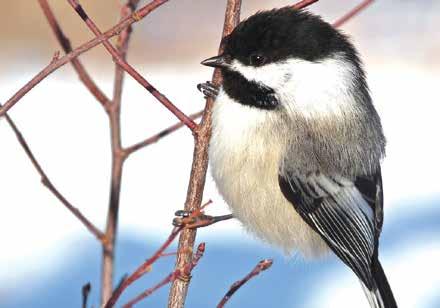






The Kansas City Gardener | January 2023 15 816-483-0908 | missouriorganic.com Top Soils • Pulverized Top Soil • Custom Soil Mixes • Garden Soil • Raised Bed Soil • Green Roof Soil Blends • Rain Garden Soil Blends Compost • NatureWiseTM • Green FrontierTM • Composted Forest Products • Composted Pine Fines Services • Sudden Gardens Consultation • Soil, Compost and Mulch Delivery and Installation Mulch • Premium I • Colored Mulches (red, brown & black) • Cedar • Hardwood Chips • Erosion Stabilization Get Our “Abby Guarantee”! You’ll find all of our quality products in bulk or bags at all of our locations. Also look for our bagged mulch at Sutherland’s Lumber. When you buy 3 or more yards of our Raised Bed Soil + The Growing MOR Nutrient Pack, we guarantee your growing success, or we’ll give you your money back on your plants. (Up to $200. Restrictions will apply.) 5 locations to serve you Soil RestorationTM • JustCharTM Growing MOR Nutrient PackTM Try Our High-Quality Soil Amendments – for 30 years –$25 off Nature WiseTM Compost 3 or more yards – –6979 WEST 75TH STREET OVERLAND PARK, KS HOURS: MON-SAT 10A-5P | CLOSED SUN 913•341•0700 WildBirdHouseStore.com Find us on Facebook! LARGEST SELECTION of wild bird supplies in the KC area, including bird seed, feeders, houses and hardware. 816-924-4924 4480 SOUTH NOLAND RD INDEPENDENCE, MO HOURS: MON-SAT 10A-5P | CLOSED SUN Family-owned & operated since 1990. here chick, chick, Chickadee ... www.greenleafkc.com 816.916.5171 Read Our Blog Though it’s Still Winter; Plan Now for Spring, Summer. Mowing • Trimming Planting • Mulching Seeding • Aeration Fertilization • Clean Up Barclay Berberian 913-208-5941 LawnsByBarclay.com www.arnoldsgreenhouse.com info@arnoldsgreenhouse.com (620) 964-2463 • 1430 Hwy 58, LeRoy, KS 66857 Review our plant list and dream about spring! Winter hours: Call for an appointment. We’d love to see you. Follow us on Facebook! Gift cards available for your favorite gardener! Bringing glorious living color to your garden since 1977.
PLANTS ON YOUR PLATE Jicama
tral flavor. They can also be cooked like a potato in mashed or fried methods or even in a stir-fry as a water chestnut substitute. A common snack south of the border is to cut jicama into sticks (like French
fries) and eat raw with chili powder and lime juice. The salad recipe below adds those southwest flavors to a colorful array of vegetables, resulting in a dish that is pleasing to the eyes and the palate!
Jicama and Black Bean Salad
MAKES 10 SERVINGS
INGREDIENTS
1 small jicama, peeled and diced – about 1 cup
1/2 cup chopped red bell pepper
1/2 cup diced sweet onion
2 tablespoons finely chopped jalapeno pepper (seeds removed) 1 can (15-ounces) black beans (drained and rinsed)

1 cup frozen corn
Jicama (pronounced with an ‘h’ not a ‘j’) might be another one of those vegetables that has not yet made it to your grocery cart. Jicama may also be referred to as Mexican potato, Mexican turnip, or yam bean. This bulbous root is a member of the bean/pea family Pachyrhizus erosus, that grows underground from a vine that can reach a height of 13 feet or more if given good support. The largest jicama on record reached 51 pounds, though when you shop, you will want to look for one in the two-tothree-pound range.

Jicama is believed to have originated in the Andes Mountain region, with evidence in archaeological sites dating back to 3000 BC. The Spanish introduced the vegetable to Asia in the 17th century. Cultivation and production continued to spread throughout South and Central America into Mexico where it is harvested from November to May. There is also jicama production in Texas, Florida, Hawaii, and Puerto Rico.
Jicama looks similar to a potato, with a rough brown exterior and crisp white interior. Though the interior texture may resemble a potato, jicama has a more broad palate of nutrients. Even with its slightly sweet taste, jicama has more complex carbohydrates and fiber, making it a good carb choice for someone monitoring their blood sugar. Jicama is also a good source of Vitamin C and numerous B vitamins, as well as the minerals magnesium, potassium, manganese, zinc, and calcium. Inulin, a type of fiber found in jicama, works as a prebiotic to support gut health, and also works with minerals like calcium, potassium, and magnesium to support bone health.
When choosing jicama at the store, look for those that are firm and solid for their size. Avoid cracked or discolored vegetables and consider that any vegetable over 4 pounds may be more fibrous than desired. Once peeled, jicama make a nice addition to a salad with the crunchy texture and neu-
¼ cup mashed avocado
2 tablespoons olive oil
2 tablespoons apple cider vinegar
1 tablespoon lime juice
1 teaspoon ground cumin
Salt and ground black pepper, if desired 2 tablespoons chopped fresh cilantro
Directions:
Wash hands and work surfaces with warm soapy water. Wash and scrub vegetables with warm water before chopping.
In a large bowl, combine chopped jicama, bell pepper, onion, jalapeno pepper, black beans, and corn; stir to combine.
In a small bowl combine mashed avocado, olive oil, cider vinegar, lime juice, cumin, salt, and pepper; stir until well blended. Add to vegetables and stir until well blended.
Cover and refrigerate for at least 30 minutes. Garnish with cilantro before serving.
NUTRITION INFORMATION
Calories: 88, Total Fat: 5g, Saturated Fat: .7g, Sodium: 65mg, Carbohydrates: 10.2g, Fiber: 2.9g, Protein: 2g
Recipe adapted from Iowa State University Spend Smart Eat Smart, analyzed by verywellfit.com.
16 January 2023 | kcgmag.com
Denise Sullivan (@MUExtJacksonCo) is a Nutrition and Health Education Specialist for MU Extension in the Urban West Region, serving Jackson and Platte Counties. For research based nutrition and food safety information and programs, call 816-482-5850 or visit https://extension2.missouri.edu/.
DENISE SULLIVAN Nutrition Ninja










The Kansas City Gardener | January 2023 17 Living and Loving The Water Garden Lifestyle! Email us: swanswatergardens@gmail.com Call us: 913-837-3510 Office hours: Mon-Fri 9a-2p www.swanswatergardens.com Located: 4385 W 247th St, Louisburg, KS Swan’s Water Gardens Let us help you enjoy your water feature in 2023! SPRING Cleanouts: In March, we start cleaning water features which will get you on the right track for maintaining your pond. Monthly Maintenance: Don’t have the time to dedicate to maintaining your water feature? Our monthly maintenance programs will ensure your water feature remains in its best possible condition. Our maintenance team is knowledgeable and will cater to exactly what your water feature needs. Other Services: • Service calls. If you ever have a problem with your feature or landscape lighting, give us a call and one of our crew members will come out and fix it. • Landscape lighting. AMP Lifetime Fixtures and Transformers. • Hardscapes. Patios, walls, firepit, decks, and outdoor living. • Full Retail Center. Pond/Lake maintenance products and equipment supplies, Koi and assorted goldfish, aquatic plants including lilies, lotus and marginals. We’re going paperless! Please contact us to guarantee you receive our emails to stay up to date on all our services for 2023! Planters Seed Co. • Since 1924 • Retail • Wholesale Lawn • Garden • Farm 513 Walnut, KCMO • 816-842-3651 Mon-Sat 8am-5pm, Sun 9am-3pm January Planting Dates Plant Above-Ground Crops: 1, 2, 6, 24, 25, 28-30 • Plant Root Crops: 6, 7, 13 Transplant: 1, 2, 28-30 • Plant Flowers: 1, 2, 24, 25 • Control Plant Pests: 18, 19 2023 SEEDS arriving daily! Grass Seeds • Fertilizers • Mulches • Bulbs • Bird Supplies • Pottery Best Quality of “Locally Grown” Bird Seed! Flowers & Vegetable Seed ~ Largest Selection in the Area ~ Koi Pond and Water Feature Designs Wendy Hix • 913.481.5416 Tate Foster • 913.406.6804 www.hixandsonaquatics.com New Installations, Remodels Upgrades, Repairs and Maintenance Services
GARDEN CALENDAR
January list of what to do in the garden.
LAWN
• Avoid walking on frozen lawns as it may injure the grass.
• Rake fallen leaves that pile up on the lawn to prevent the grass from suffocating.
• Tune-up the lawn mower now so it is ready for spring.
• Scatter snow instead of piling up on the lawn next to drives and walks.
• Talk with your lawn care service provider about contracts for the upcoming season.
• If you missed fall overseeding, dormant seeding can be done following a light snow or rainfall.
FLOWERS
• Scan nursery catalogs and the Internet for new introductions. Which ones do you have to have?
• Still have bulbs to plant? Get in the ground now.
• Start transplants for spring planting.

• Water fall-planted perennials as needed to prevent desiccation.
• Watch for signs of frost heaving and cover tender roots.
• Replace mulch layers as needed.
• Check stored bulbs for rot and decay and discard damaged ones.
• Curl up with a good book and learn more about gardening.
TREES AND SHRUBS
• Gently brush heavy snow off from tree and shrub limbs to reduce damage.

• Prune storm damaged limbs quickly to reduce damage and prevent tearing of the bark.
• Allow ice to melt naturally from limbs.
• Bring twigs of flowering trees and shrubs indoors for forced spring blossoms.
• Avoid the temptation to prune on a warm winter day.
• Water fall-planted trees and shrubs when soil is dry and not frozen.
• Watch out for rabbit damage to bark of trees and shrubs.
VEGETABLES AND FRUITS
• Read through your favorite seed catalogs and prepare order.
• Check stored seeds and discard old or unwanted.
• Have a soil test taken if it has been more than three years since the last soil test.
• Start vegetable transplants for the garden indoors under grow lights.
• Order fruit trees.
• Pick up fallen fruit before spring arrives and discard.
• Be on the lookout for rabbit and rodent damage to fruit tree bark.
MY GARDEN (Use this space to list additional tasks to accomplish in your garden.)
• • •
•
INDOOR PLANTS
• Wash dust off plant leaves to allow more sunlight to reach the leaves.
• Water plants with room temperature water.
• Insecticidal soap sprays can be used to remove pests.
• Mealy bugs and scales can be wiped off with a swab soaked in rubbing alcohol.
• Rotate plants to develop a well-rounded plant.
• Keep new plants separated to be sure they do not harbor insects.
• Reduce fertilizer use until spring when more sunlight is available for growth.
18 January 2023 | kcgmag.com
Johnson County K-State Research and Extension recommends environmentally-friendly gardening practices. This starts by identifying and monitoring problems. Cultural practices and controls are the best approach for a healthy garden. If needed, use physical, biological or chemical controls. Always consider the least toxic approach first. Dennis Patton is the horticulture agent for Johnson County K-State Research and Extension. For free information fact sheets, visit www.johnson.ksu.edu, or call the Extension office at 913-715-7000.
Garden Design with Maintenance in Mind
For the 6th year, the MdC EMG (Marais des Cygnes Extension Master Gardeners) offer their Garden Design Symposium in Paola, Kansas on February 25, 2023. This year’s focus is on maintenance because experienced gardeners know that a no-maintenance garden does not exist and garden maintenance is as important to success as garden design or cool plant selections. Fortunately, horticulture no longer dictates a “one size fits all” approach. Maintenance styles can range from a scorched earth clean-up to the new battle cry, “leave the leaves.” Gardeners differ greatly in their tolerance for “messy” versus pristine and the demands of an HOA can also impact your design choices and maintenance routine.
In her opening presentation Know before you Grow, Marais des Cygnes Extension Master Gardener Stacie Campbell offers an overview of the most popular garden styles and what each needs from you so you can start your relationship on the right foot. As she explores the differences between gardeners and their gardens, Stacie explains that “Not all gardens are created equal, and none are no-maintenance. Equally, not all gardeners are the same. Some love to spend hours in the garden while others have very little time. Some hate to dig and others love to weed. This presentation will help you to assess your skills and preferences. Knowing yourself and knowing what you can give to your garden are critical to its success and your gardening satisfaction.
MdC EMG Lenora Larson (pictured) proudly proclaims that there are no weeds in her garden. Really! In Winning the Weed Wars, she shares a broad range of strategies that she uses to gain the advantage when battling weeds. She focuses on understanding the enemy but urges guilt-free co-existence with the weeds that you can tolerate or even befriend. Management techniques include traditional tools like trowels, hoes and other mechanical methods of weed removal. Even yanking is an art! Horticultural tactics emphasize prevention with mulch, controlled nutrients and undisturbed soil. Other tactics utilize well-timed chemical applications, heat, and even biocontrols like flea beetles and host-specific caterpillars.
Brad Guhr, Director of Prairie Restoration at the Dyck Arboretum of the Great Plains, presents Native Plant Landscaping: Best Practices With tongue in cheek, he declares that you can have a no maintenance garden. Just install an irrigation system, plant a monoculture, hire a mowing crew and relinquish a relationship with the natural world. Conversely, if you commit to landscaping with native plants, you are choosing an engaging, life-long venture with Mother Nature, including plant-pollinator interactions. There are some short cuts to success so Brad’s 20 years of native landscaping trial and error have evolved into a summary of best management practices.
In his presentation Maintenance for the Aging Gardener Kevin Nelson, Douglas County Master Gardener, declares that gardening is truly a lifelong pursuit that can be enjoyed from childhood well into old age. Ultimately, getting the most out of gardening for the longest period requires adjusting our landscapes, our tools, our techniques and our expectations. You will see examples of how to alter your beds, reexamine your plant choices and assess your tools. Many gardeners are forced to downsize from a traditional home to an apartment; however, you can still do the most with the space you have.
“Garden Design with Maintenance in Mind” will be presented by the Marais des Cygnes Extension Master Gardeners on February 25, 2023; 9 a.m. to 3:30 p.m. at the Lighthouse Church, 1402 E. 303rd St., Paola, KS 66071. The $45 tickets will be sold online only. Don’t delay, as we always sell out early! Here is the link to the online registration: https:// tinyurl.com/MdCEMGGardenSymposium.
Upcoming Garden Events
Tulips, Wind Generation, and Flood Management
Thurs, Jan 5, 10am; at Sunflower Room, Wyandotte County Extension Office, 1208 N 79th St, Kansas City, KS. Join Don Crim, Wyandotte County KS Extension Master Gardener, for his presentation on the Tulips, Wind Generation and Flood Management in Holland. Mr. Crim and his wife visited Holland a few years ago, and this presentation contains beautiful slides of the country and its resources. Pre-registration is not necessary.
Native Plants
Fri, Jan 6, 1-2pm; at Anita B Gorman Conservation Discovery Center, 4750 Troost Ave, Kansas City, MO 64110. Registration required (ages 14+) Find peace and beauty in the variety of textures, colors and forms seen in native plant gardens. Join our native landscape specialists for a tour of our resilient and dramatic native plantings. Bring your questions and get advice on how and what to add to your garden in spring to gain some winter beauty in your own yard. Register at https://mdc.mo.gov/ events.
Leavenworth County Master Gardeners Wed, Jan 11, 11am; at Riverfront Community Center, 123 Esplanade St, Leavenworth, KS 66048. Local entrepreneur Austin Reynolds will present, “Leavenworth Farmers Market; history, structure and workings. With a spotlight on vendors and their unique processes and products.” The meeting is free. Visitors are welcome. For more information call Leavenworth County Extension office at 913-364-5700.
Birds of Missouri: Winter Survival Sat, Jan 14, 10am-2pm; at Anita B Gorman Conservation Discovery Center, 4750 Troost Ave, Kansas City, MO 64110. Walk-in (all ages) Possessing the right tools is the key to survival for birds as the wintery chill of January surrounds us! Learn about the specialized structures and adaptations that help birds survive in their native habitats. Participate in hands-on exploration and investigation of different types of skulls and beaks. Dissect an owl pellet and look for the secrets that rest within and make a platform bird feeder to take home. Birds stay very busy during the winter, come by and learn what they’re up to! Registration is not required.
Olathe Garden & Civic Club
Tues, Jan 17, noon-2pm; at Black Bear Diner (11981 S Strangline Rd, Olathe). Please join us for a presentation, “Champion Trees” from guest speaker Rick Spurgeon, retired arborist for The City of Olathe. Optional: order lunch at the diner to be enjoyed during the presentation and club meeting. We hope to see you there! *Free to attend and open to the public, Club membership not required.*
Leawood Garden Club
Tues, Jan 24, 10:30am; at Cure’ of Ars Catholic Church, 9401 Mission Rd,

Leawood, KS. Dennis Patton, Horticulture Agent at the Johnson County K-State Research and Extension Office located in Olathe, KS, will be presenting All about Hydrangeas. We will also provide a Horticultural Hint on the topic of “The Untold Secret of the Lawn That’s Always Green,” and our Show of the Month will be on the topic of “Grandkids in the Garden.”
Raytown Garden Club
Tues, Feb 7, 10am; at Connection Point Church, 10500 E State Rte 350, Raytown, MO 64138. The program scheduled will be “Adaptive Gardening, Techniques to Help You Garden into your Nineties.” Guests are always welcome. For more information please check out our Facebook page: https://www.facebook.com/RaytownGardenClub.
Paola Spring Symposium
Sat, Feb 25, 9am-3:30pm; at the Lighthouse Church, 1402 E 303rd St, Paola, KS 66071. “Garden Design with Maintenance in Mind” will be presented by the Marais des Cygnes Extension Master Gardeners. The $45 tickets will be sold online only. Don’t delay, as we always sell out early! Presentations include Stacie Campbell discussing how to match your garden’s design and your maintenance abilities. Are weeds your nemesis? Lenora Larson shares how to win the weed wars. Brad Guhr from Dyck Arboretum debunks the myth of native plants requiring little or no maintenance and Kevin Nelson considers maintenance strategies for the aging gardener. Here is the link to the online registration: https://tinyurl.com/MdCEMGGardenSymposium
Kansas City Rose Society
Sat, Mar 25, 10am; at the Loose Park Garden Center. “Aphids, Japanese Beetles, and Rose Midge: How to Identify and Control Rose Pests,” by Dr. Raymond A. Cloyd: Professor and Extension Specialist in Horticultural Entomology/Plant Protection, Department of Entomology, Kansas State University (Manhattan, KS). After the program, all are encouraged to join Dana Flemming, KC Parks Landscape Technician/Head Rosarian, in the Laura Conyers Smith Rose Garden to learn about the organic products used there and to learn how to plant a bare root rose bush.
Save the Date!
The Garden Club of Shawnee will hold its Garden Tour 2023 on Saturday, June 10. Five wonderful and unique private gardens will be on the tour. Watch this space for more information.
Promote plant sales, club meetings, classes, and other gardening events for FREE!
Send details to: elizabeth@kcgmag.com.
Deadline for publishing in the February issue is January 5.
The Kansas City Gardener | January 2023 19
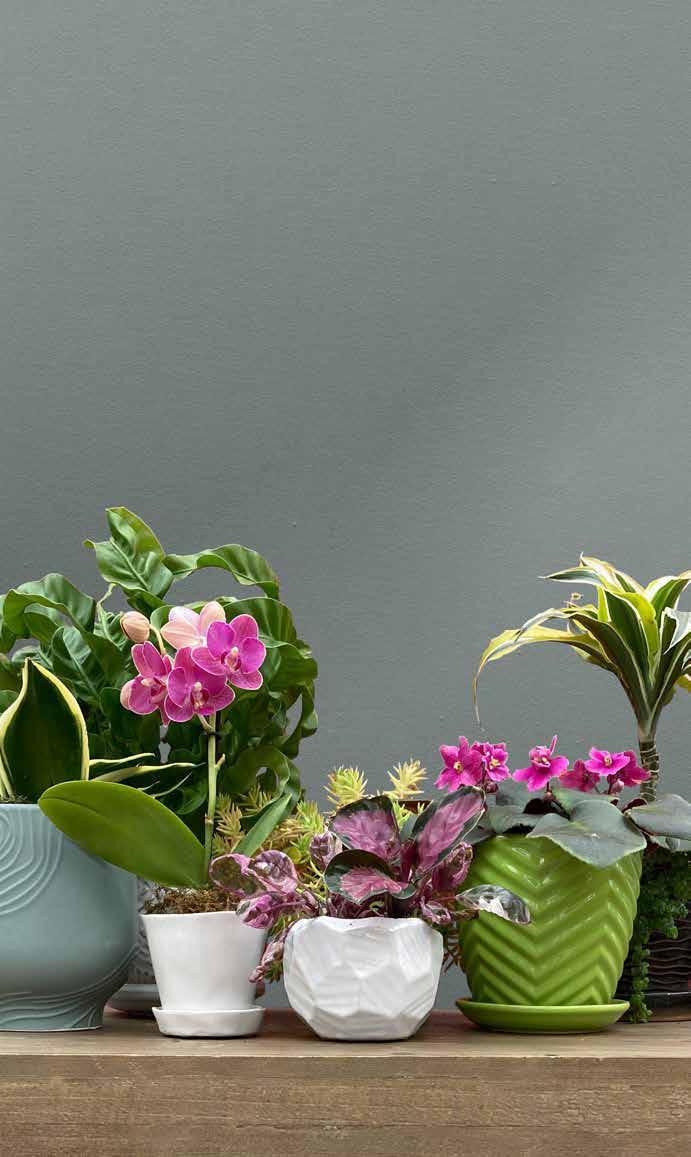


20 January 2023 | kcgmag.com Jan. 3-Jan. 23 20% off We have plants for any room in your home. • Bright light to no light • Large floor plants to itty-bitties • Colored foilage, flowering, or rich green Come visit us for a great selection. Sale Houseplant ANNUAL suburbanlg.com K-7 & Prairie Star Pkwy (913) 897-5100 135th & Wornall (816) 942-2921 105th & Roe (913) 649-8700 • Bird Feeders • Bird Seeds • Bird Houses Many birds don’t migrate for the winter, and winter is the most important time to look out for our feathered friends. Natural seed sources become depleted when birds need to weather temperature extremes. Stop in help them out. • The best selection in the KC metro area • Sizes to fit any need • A rainbow of colors to choose from plus a wide variety of neutrals • Huge range of styles Everything from elegant to whimsical Will chirp for food. Pottery with Style We even have plants for people who think they can’t grow plants. A B C D F K G H PLANTS: A) Sansaveria B) Hurricane Bird’s Nest Fern C) Phaleonopsis Orchid D) Variegated Waffle Plant E) Sedum F) Calathea G) African Violet H) Dracena POTTERY: J) Mini pinchpot $9.99 K) Pentagon Matrix $4.99 L) Green chevron $15.99 J E L

















































































